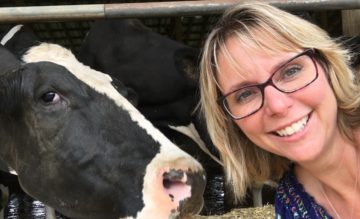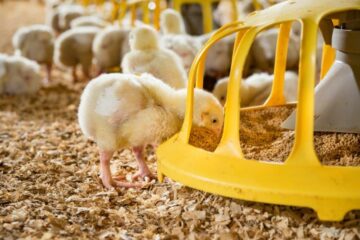Features and Fun on the Farm
Among the joys I’ve experienced as a veterinarian over the last two decades has been helping others learn about animals that produce food. Answering questions on the importance of protecting animal health is one of the best ways I know to bring about a better understanding of what it takes to provide a healthy, affordable food supply. In fact, I’ve started work on several new videos that I’m really excited about, so I thought I would share highlights and bloopers.
My goal for the five-part series is to answer questions about animal care and contribute to an open, honest dialogue about what it takes to keep animals healthy and food safe. That’s the serious side of the project, but there is also a funny side.
If you’ve visited a farm, you know that no matter how much planning you do, there is a certain level of unpredictability associated with animals. They tend to care very little about whether the camera is rolling, nor who is close by when their systems get rolling … if you know what I mean. Yes, I’m leading up to an outtake that I couldn’t resist sharing. If getting slimed is what it takes to give the public a look at farm life and animal care, then I’m all in.
Back to the serious side: my new series will take a fresh look at antibiotic use in animal agriculture and what are we doing to minimize agriculture’s contribution to antibiotic resistance. If you’ve read my previous blogs, you know this is something I care very much about as a veterinarian and mother of three. Responsible use means doctors and veterinarians are applying greater scrutiny to determine the cause of infections and prescribing antibiotics only when absolutely necessary, as I’ve written about before. The shared goal is to ensure we use as little as possible, yet keep antibiotics available to protect both human and animal health.
I will also give you a window into the world of vaccinations and how they help protect both animal and human health. For example, vaccines may decrease the incidence of salmonella in hens, which helps keep eggs safer. Vaccines help prevent diseases that might otherwise require antibiotic treatment. The goal is to keep animals healthy and reduce the need for antibiotics – ensuring they remain available when needed to address animal pain and suffering.
There is a rapidly growing area of animal care that involves the use of nutritional products to optimize animal health. You’re probably aware of the growing popularity of “natural” products like herbal teas and plant roots people use in hopes of supporting the immune system and lessening the effects of illness. Something similar is happing in the animal health community. A great side benefit is the potential for these products to help reduce the need for antibiotics. I’ll discuss some of these nutritional products in the video series, which I hope to post in July.
The environment on a farm can be unpredictable – it took me an hour to wash the slime off my clothes – but I enjoy every opportunity to visit farms, take care of animals, and help people better understand the importance of wisely using all the tools at our disposal to keep animals healthy. Ultimately, healthy animals contribute to environmental stewardship and a healthy, affordable food supply.
I welcome your thoughts and questions. Please feel free to send me an email at AskDrDorman@pahc.com or call me at 844-288-3623. You can also browse our Resource Library to learn more about this important topic.

